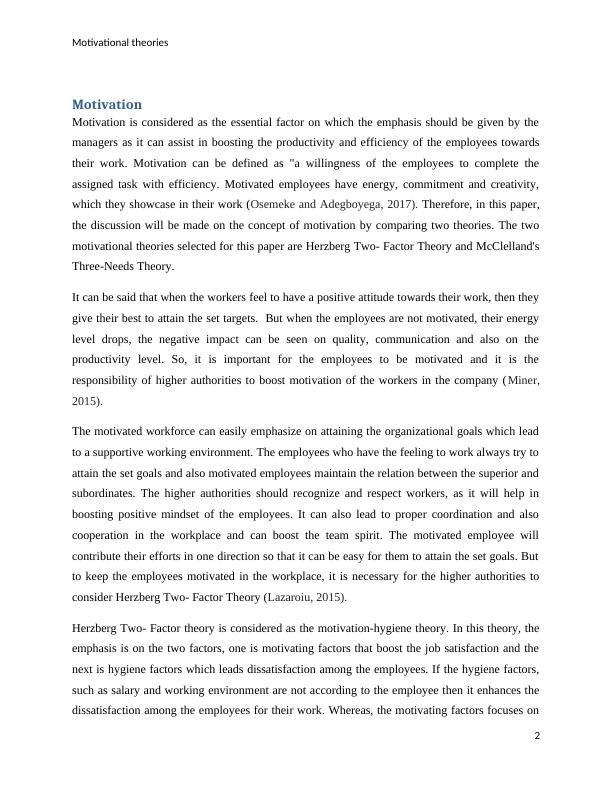Motivational Theories: Herzberg Two-Factor Theory and McClelland's Three-Needs Theory
5 Pages1408 Words308 Views
Added on 2023-04-21
About This Document
This paper discusses the concept of motivation by comparing two theories: Herzberg Two-Factor Theory and McClelland's Three-Needs Theory. It explores the factors that contribute to employee motivation and the impact on productivity and efficiency. The paper also highlights the importance of recognizing and boosting motivation in the workplace.
Motivational Theories: Herzberg Two-Factor Theory and McClelland's Three-Needs Theory
Added on 2023-04-21
ShareRelated Documents
End of preview
Want to access all the pages? Upload your documents or become a member.
Introduce to the Motivation Theory
|6
|1163
|40
Coursework-1 Collaborative Activity Assignment PDF
|11
|2130
|53
Understanding Different Motivation Theories and Their Application into Organisation
|8
|2036
|61
Chapter 7 – motivation concepts PDF
|4
|1456
|264
Organizational Behavior At Workplace
|3
|562
|69
Motivational Theories and Their Impact on Organizations
|8
|921
|352


